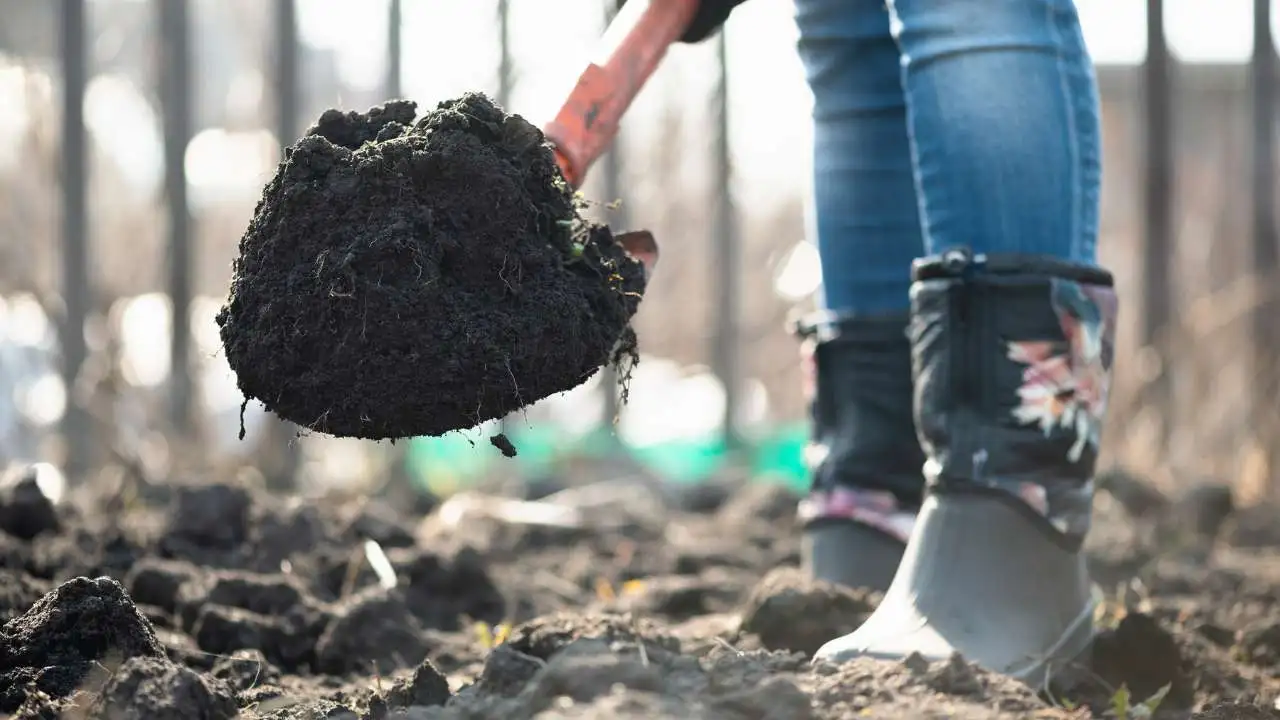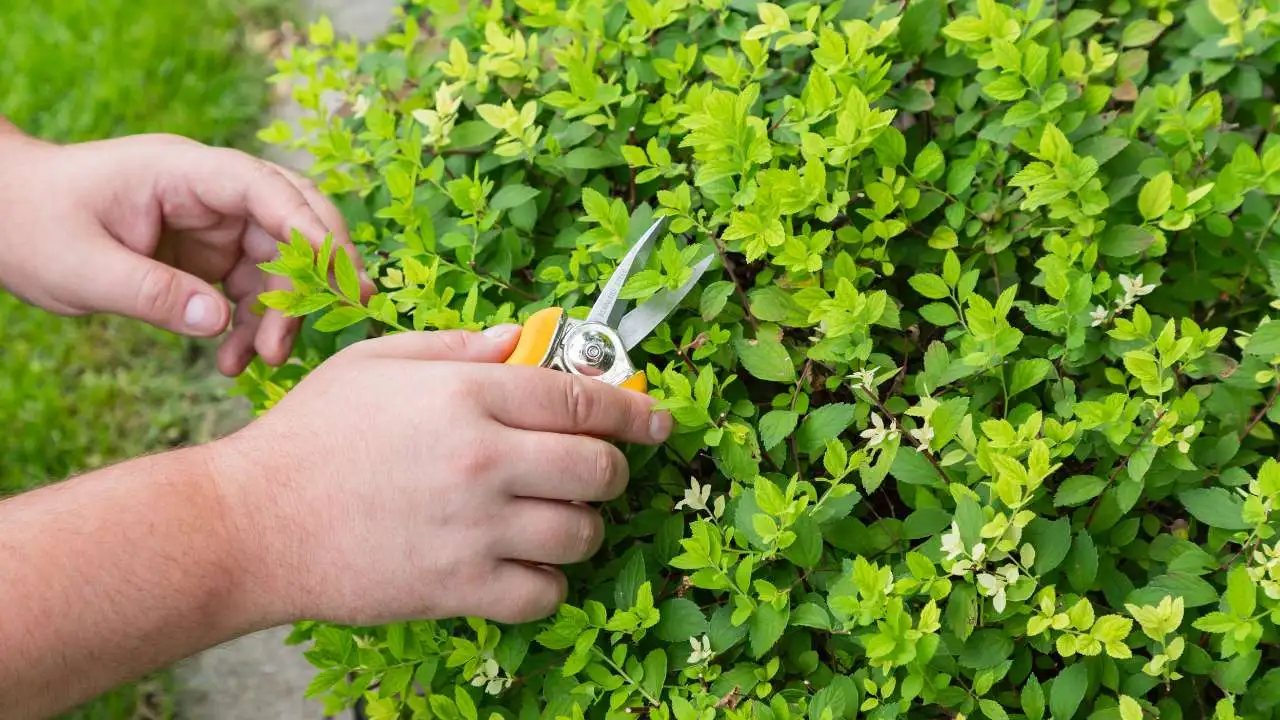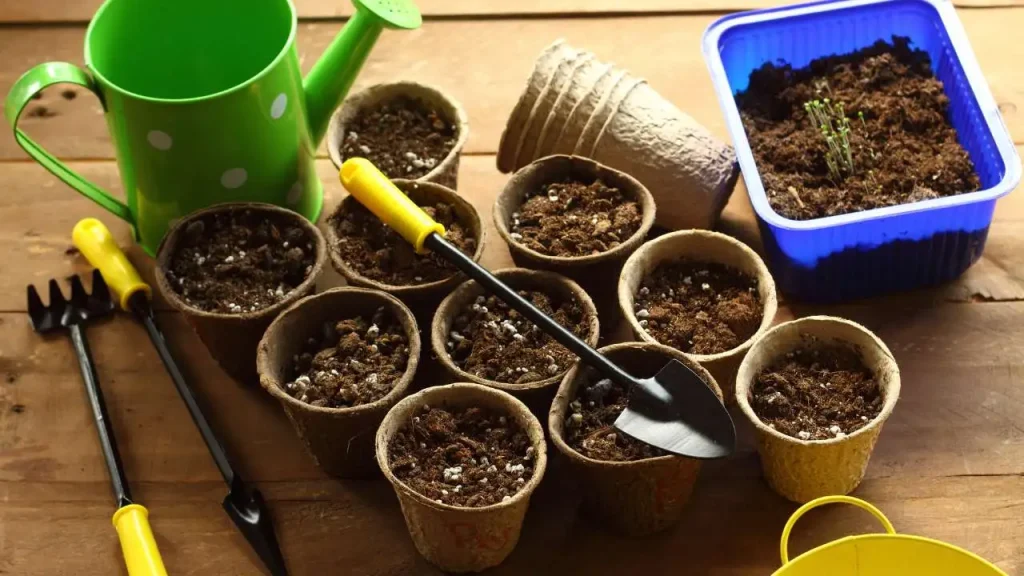The changing of seasons is a remarkable phenomenon in the world of gardening. As summer’s warmth gradually yields to the crisp embrace of autumn, and then the cold, unforgiving grasp of winter, our gardens undergo a transformation of their own. While the vibrant blooms and lush foliage of summer may fade, the beauty of a well-prepared winter garden can be just as captivating.
In this comprehensive guide, we will delve deep into the essential steps required to prepare your garden for winter. From cleaning up garden debris to insulating your soil with mulch and protecting tender plants from the frost, we will cover every aspect of winter garden care. By the end of this article, you will be equipped with the knowledge and tools needed to ensure that your garden not only survives the winter but thrives and flourishes come spring.
Introduction for Preparing Your Garden for Winter
Before we dive into the specific steps of preparing your garden for winter, it’s important to understand why this seasonal transition is crucial for the health and longevity of your garden. Properly preparing your garden for winter is more than just a cosmetic endeavour; it’s an investment in the future vibrancy of your outdoor space. Here’s why it matters:
Winter Garden Care Ensures Plant Health
During the winter months, plants face a host of challenges, including freezing temperatures, harsh winds, and limited sunlight. Without proper preparation, these conditions can lead to various issues, such as frost damage, root damage, and even the death of delicate plants. By taking proactive steps, you can minimize these risks and maintain the overall health of your garden.
Winter Preparation Promotes Soil Health

Healthy soil is the foundation of a thriving garden. Cold weather can disrupt soil structures and lead to issues like frost heaving, which can harm plant roots. Winter garden care, including mulching, helps insulate the soil, maintain moisture levels, and protect it from extreme temperature fluctuations.
A Well-Prepared Garden Springs to Life
Perhaps the most rewarding aspect of winter garden care is the way it sets the stage for a spectacular spring. When you’ve prepared your garden for winter properly, you’ll witness the magic of plants awakening from their winter slumber. Bulbs burst forth with vibrant flowers, shrubs rejuvenate with fresh growth, and your garden comes to life once more.
Now that we understand the importance of preparing your garden for winter, let’s explore each essential step in detail.
1. Clean Up Garden Debris
Before you can begin the process of preparing your garden for winter, it’s essential to start with a clean slate. This means removing any debris that has accumulated over the summer and early fall. Here’s why this step is crucial:
Pest and Disease Prevention
Leaves, dead plant matter, and fallen branches can provide hiding spots and breeding grounds for pests and diseases. By cleaning up garden debris, you reduce the risk of infestations and infections that can damage your plants.
Improved Aesthetics
A tidy garden not only looks better but also makes it easier to spot and address any potential issues. A thorough cleanup enhances the overall appearance of your outdoor space.
Easier Spring Gardening
Clearing away debris now means less work when spring arrives. You won’t have to contend with old, decaying plant matter or fallen leaves that can smother emerging spring growth.
To clean up garden debris effectively, follow these steps:
-
- Rake Leaves: Collect fallen leaves and add them to your compost pile or use them as mulch in designated areas of your garden.
- Remove Dead Plants: Pull out annuals that have finished their lifecycle, and cut back any perennials that have died back for the season.
- Prune Dead or Overgrown Branches: Use pruning shears to trim away any dead or overgrown branches from trees and shrubs. Proper pruning promotes healthy growth and reduces the risk of winter damage caused by heavy snow or ice accumulation.
2. Prune and Trim

Pruning is a fundamental aspect of garden maintenance that often requires some attention before winter arrives. Proper pruning helps your plants stay healthy, maintain their shape, and improve air circulation. Here’s how pruning benefits your garden:
Encourages Healthy Growth
Pruning stimulates new growth by removing dead or damaged branches. This ensures that your plants are in the best possible condition to withstand the rigors of winter and flourish in the spring.
Reduces Disease Risk
Removing diseased or infested branches through pruning can prevent the spread of diseases and pests to healthy parts of the plant.
Prevents Winter Damage
Pruned plants are less likely to suffer from the weight of snow or ice, which can lead to breakage or structural damage. Proper pruning helps maintain the plant’s shape and prevents it from becoming top-heavy.
Here are some key considerations for pruning and trimming of preparing your garden for winter:
-
- Choose the Right Tools: Invest in high-quality pruning shears, loppers, and saws for different pruning tasks. Ensure they are sharp and well-maintained for clean cuts that promote plant health.
- Know When to Prune: Different plants have different pruning requirements. Some are best pruned in late winter or early spring, while others benefit from pruning in the late summer or fall. Research the specific needs of your plants before pruning.
- Prune Properly: Make clean cuts just above a bud or branch junction. Avoid leaving stubs or creating jagged edges, as these can lead to disease entry points.
3. Mulching for Insulation
Mulching is a garden practice that often receives less attention than it deserves. However, it’s a crucial step in preparing your garden for winter. Mulch provides a layer of insulation that offers several benefits:
Temperature Regulation
Mulch helps regulate soil temperatures, keeping them more stable throughout the winter. This is particularly important in areas with fluctuating temperatures, as it prevents soil from thawing and freezing repeatedly, which can damage plant roots.
Moisture Retention
Mulch acts as a barrier that slows the evaporation of moisture from the soil. This helps maintain consistent soil moisture levels, reducing the risk of drought stress for your plants.
Frost Heaving Prevention
Frost heaving occurs when soil alternates between freezing and thawing, causing plants to be pushed out of the ground. Mulch acts as a protective blanket, minimizing the chances of this disruptive phenomenon.
To effectively mulch your garden for winter, follow these steps:
-
- Choose the Right Mulch: Organic mulches like shredded leaves, straw, or compost work well for winter mulching. They provide insulation and break down over time to enrich the soil.
- Apply a Layer of Mulch: Spread a layer of mulch around the base of your plants, ideally about 2 to 4 inches deep. Ensure that the mulch does not touch the plant stems or tree trunks, as this can promote rot.
- Mulch Broadly: Extend the mulch layer to cover the entire root zone of your plants, reaching out to the drip line (the outer edge of the canopy for trees and shrubs). This ensures that the entire root system benefits from the insulation.
- Replenish as Needed: Mulch may decompose over the winter months, so monitor its thickness and replenish it if it appears to be thinning out.
4. Protecting Tender Plants
While many plants are hardy enough to withstand winter’s chill, some are more delicate and susceptible to frost damage. It’s essential to identify these tender plants in your garden and take steps to protect them. Here’s how to safeguard your vulnerable flora:
Identify Tender Plants
Start by identifying the plants in your garden that are less cold-tolerant. These might include tropical plants, potted plants, or recently planted shrubs and trees that haven’t had a chance to establish strong root systems.
Move Indoors or Provide Cover
For potted or container plants, the easiest way to protect them from winter’s cold is to bring them indoors. Place them near a sunny window or in a protected area like a greenhouse or porch.
For plants that can’t be moved, consider providing protective coverings, such as:
-
- Burlap: Wrap burlap around the plants to shield them from harsh winds and freezing temperatures. Make sure the burlap doesn’t touch the plant directly and is securely anchored.
- Frost Cloth: Frost cloth is a specialized fabric designed to protect plants from frost. It allows light and air to pass through while providing insulation. Secure it over your plants with stakes or clips.
- Homemade Cloches: You can create DIY cloches using materials like plastic milk jugs with the bottom cut off or clear plastic sheeting supported by wire frames. Place these cloches over individual plants to create a mini-greenhouse effect.
Watering Before the Freeze
Before the first freeze of the season, make sure your tender plants are well-watered. Moist soil retains heat better than dry soil, so adequately hydrated plants are better equipped to withstand cold temperatures.
By taking these steps to protect your tender plants, you can ensure their survival until warmer weather returns.
5. Clean and Store Garden Tools
Amidst the hustle and bustle of preparing your garden for winter, it’s easy to overlook the tools that help you maintain it. Neglected tools can deteriorate, rust, or become less effective over the winter months. Here’s how to care for your garden tools:
Clean Tools Thoroughly
Before storing your garden tools, give them a thorough cleaning. Remove dirt, sap, and plant residue from the blades, handles, and metal parts. Use a wire brush or putty knife to remove stubborn dirt and sap.
Sharpen Blades
Sharp tools make your gardening tasks easier and more efficient. Use a file or sharpening stone to sharpen the blades of pruners, shears, hoes, and shovels. Dull blades can damage plants and make your work more labor-intensive.
Oil Moving Parts
Apply a light coating of oil to any moving parts on your tools, such as pivot points and hinges. This prevents rust and keeps the tools in good working condition.
Store Properly
After cleaning and sharpening your tools, store them properly to protect them from the elements. Hang tools with handles on hooks or store them in a dry shed or garage. Keep tools off the ground to prevent moisture damage.
By investing a little time in cleaning and maintaining your garden tools before winter sets in, you’ll ensure that they’re ready for action when spring arrives.
6. Check Garden Structures
Garden structures, such as trellises, fences, and raised beds, play a crucial role in the overall functionality and aesthetics of your garden. It’s essential to inspect these structures for damage and make any necessary repairs before winter arrives. Here’s why:
Prevent Further Damage
Any damage to garden structures can worsen during the winter months. For example, a weakened fence may collapse under the weight of snow, damaging nearby plants. Fixing issues before winter ensures your garden remains safe and intact.
Prepare for Snow Load
In regions with heavy snowfall, it’s especially important to assess the stability of structures like trellises and arbors. Reinforce or dismantle structures that might not withstand the weight of accumulated snow.
Maintain Aesthetic Appeal
A well-maintained garden structure enhances the visual appeal of your outdoor space. Repairing and painting structures now can help maintain the overall beauty of your garden.
Here are some steps to check and maintain your garden structures:
-
- Inspect for Damage: Walk through your garden and inspect each structure for signs of damage, rot, or instability. Pay close attention to posts, crossbars, and connections.
- Reinforce Weak Points: If you identify weak points or areas that need repair, take action promptly. Replace rotted wood, reinforce connections with screws or bolts, and ensure that structures are securely anchored to the ground.
- Paint or Seal Wood: If your garden structures are made of wood, consider giving them a fresh coat of paint or sealant. This not only improves their appearance but also protects them from moisture and weathering.
- Dismantle as Needed: In areas with heavy snowfall or strong winter winds, consider dismantling certain garden structures that may be at risk. Store dismantled components in a dry location until spring.
Taking the time to address these structural concerns ensures that your garden remains safe, functional, and visually appealing throughout the winter.
7. Plan for Spring
While preparing your garden for winter may seem like a task focused on the present, it’s also an opportunity to look ahead to the future. Planning for spring during the winter months can give you a head start on the gardening season. Here’s how to make the most of this time:
Research and Select New Plants
Use the winter months to research and select new plants for your garden. Consider what types of flowers, shrubs, or trees you’d like to add to your landscape. Look for plants that are well-suited to your climate and soil conditions.
Prepare Garden Beds
If you plan to create new garden beds or expand existing ones in the spring, now is an excellent time to prepare the soil. Remove any weeds or debris from the intended bed area, amend the soil with compost or organic matter, and cover it with mulch to prevent weed growth.
Landscape Changes
Winter is also a good time to consider any larger landscape changes you’d like to make. Whether it’s adding a new garden feature, redesigning a portion of your yard, or planning a garden path, taking the time to outline your ideas and create a design will set you up for success in the spring.
Seed Starting
If you’re interested in starting plants from seeds in the spring, begin researching the specific requirements of the plants you want to grow. Gather the necessary supplies, such as seed trays, potting mix, and grow lights, so you’re ready to start sowing when the time comes.
Planning for spring during the winter months not only gets you excited about the upcoming gardening season but also helps you make informed decisions and stay organized.
8. Keep an Eye on Weather Forecasts

As winter progresses, it’s essential to stay informed about upcoming weather conditions, especially frost and extreme cold alerts. Monitoring weather forecasts allows you to take additional protective measures if necessary. Here’s what to keep in mind:
Frost Alerts
Be particularly vigilant about frost alerts, as they can pose a significant threat to your garden. When frost is forecasted, consider covering vulnerable plants with blankets, cloths, or frost cloth to protect them from freezing temperatures.
Snow Accumulation
Heavy snowfall can lead to structural damage to plants and garden structures. If significant snow accumulation is expected, gently shake or brush off excess snow from branches and structures to prevent damage.
Be Prepared to Act
Stay prepared to take action based on weather forecasts. Having protective coverings, additional mulch, and other necessary supplies on hand ensures that you can respond quickly to changing weather conditions.
Conclusion
As winter approaches, the care and maintenance of your garden take on new dimensions. Preparing your garden for winter isn’t just about preserving its beauty; it’s about ensuring the health and vitality of your plants. By following these essential steps—cleaning up garden debris, pruning and trimming, mulching for insulation, protecting tender plants, cleaning and storing garden tools, checking garden structures, planning for spring, and staying weather-aware—you can create a resilient, thriving garden that will burst into life when spring arrives.
Remember that each step contributes to the overall health and beauty of your garden, making the effort you invest in winter garden preparation well worth it. So, embrace the changing seasons, and let your garden rest and rejuvenate during the winter months, knowing that it will return to full splendor when the warmth of spring once again graces your outdoor space.

